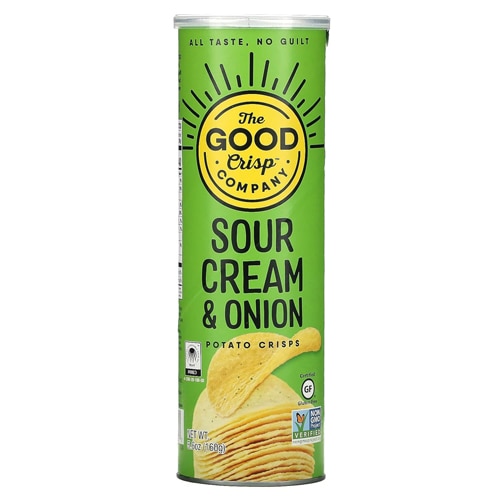If it gets dinner on the table faster, it gets your attention. But when it comes to air fryers, they just seem like another cumbersome kitchen appliance. It’s true that on the large side, air fryers can hold up to 10 quarts. Some even take up more space than a Crock Pot. So are they really worth that kind of real estate? Are air fryers healthy? What can you cook in an air fryer, anyway?
Air fryers came about in 2010 when Philips Electronics introduced the first appliance of its kind. But by the end of 2017, dozens of brands had taken on the air-fryer market. Consequently, at-home cooks across the U.S. started pining for this new healthy innovation. As shown on TV and on social media, this device can fry potatoes without a hot basket of oil – and the inevitable grease stains that follow. Plus, they come out crispier than oven-baked “fries” and are done in half the time.
How does an air fryer work?
The concept behind an air fryer is nothing new. Air fryers are specially designed to circulate heat around the food until it’s cooked through. It’s like a convection oven that uses a fan to blow hot air at a high speed. This creates a crispy outside shell and a juicy center via a Maillard reaction. The Maillard reaction occurs when amino acids bond with reducing sugars to create a browning effect with distinctive taste and aroma. It’s the same reaction that takes place when making bread.
Are Air Fryers Healthy?
You know fried food is not your healthiest option. The science is even there to prove it. The American Journal of Clinical Nutrition published a study in June 2014 that found “frequent fried-food consumption was significantly associated with risk of incident type 2 diabetes and moderately with incident coronary artery disease.”
Frying foods not only modifies the food itself but also the oil in which it’s cooked. Through oxidation, polymerization and hydrogenation, the oil is degraded, leading to a change in fatty acid composition. This is especially true if the oil is reused over and over and if you choose the wrong type of oil.
For instance, coconut oil has a smoke point of 350 degrees F. To deep fry, you need to heat the oil to about 375 degrees F. At that temperature, coconut oil would start to break down and release harmful free radicals. On the other hand, canola oil or expeller-pressed safflower oil is healthy for frying foods, because a high concentration of monounsaturated fatty acids makes them more stable for high-heat cooking.
But it’s not just the type of oil that matters. Frying foods requires a significant amount of oil, which gets absorbed by whatever food you’re frying. This is why even a fried vegetable turns into a calorie bomb.
All that oil can also increase the production of acrylamide. According to FDA.gov, “acrylamide is a chemical that can form in some foods during high-temperature cooking processes, such as frying, roasting, and baking.” Acrylamide forms when the amino acid asparagine reacts with sugar in foods. However, a 2005 study from Belgium, published in the Journal of Agricultural and Food Chemistry, found that “when artificial mixtures did not contain vegetable oil, significantly lower concentrations of acrylamide were detected, compared to oil-containing mixtures.”
By using an air fryer, you eliminate the need for a lot of oil – if any. That means you can enjoy the taste and texture of healthy French fries without the belt-busting calories or health-risking free radicals.
But wait, there’s more…
An air fryer isn’t just a healthier cooking method. It’s also a faster, more energy-efficient way to get dinner on the table. You can have perfect pork chops ready in 20 minutes, a party-sized platter of cauliflower hot wings crispy in 15 minutes or a pound of meatballs done in eight.
Part of the reason air fryers are so fast is because they reach high temperatures in a matter of one or two minutes. Conventional ovens, on the other hand, can take five times as long to pre-heat.
Air fryers also use less energy (kilowatts) – meaning less impact on your electric bill. Of course, that’s assuming you use an air fryer appropriately. In other words, baking a three-layered birthday cake or several batches of cookies in an air fryer will likely require more energy than your oven. Stick to one or two rounds of cooking at a time, and you’ll get the most out of your air fryer.
How to Use an Air Fryer: 4 Main Methods
- Fry – Frying is what the air fryer was designed to do best. Use it for chicken wings, homemade sweet potato fries and the like. They will be perfectly crispy on the outside with a warm, gooey inside.
- Bake – Yes, you can use an air fryer to bake desserts, including brownies, pies, cakes, cookies and even cheesecakes. You’ll either place a baking dish right in the air fryer or line the bottom with parchment paper.
- Roast – While a 20-pound Thanksgiving turkey won’t fit in even the largest air fryer, you can successfully roast a Cornish hen in one. Even better, use the air fryer to roast a variety of vegetables, such as broccoli, butternut squash and bell peppers.
- Reheat – Preparing partially cooked or frozen foods in the air fryer couldn’t be simpler. They don’t require any oil at all and tend to taste fresher than if you had used a toaster oven or conventional oven.




